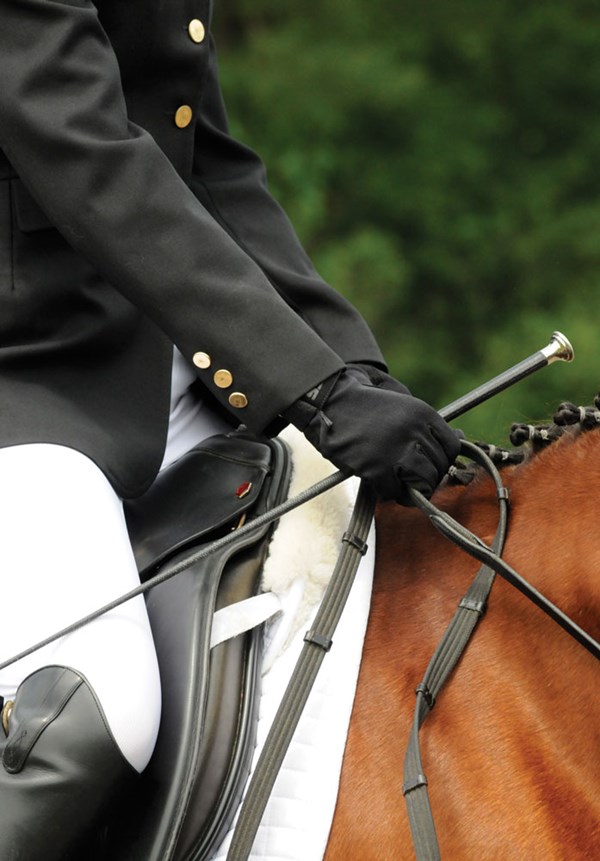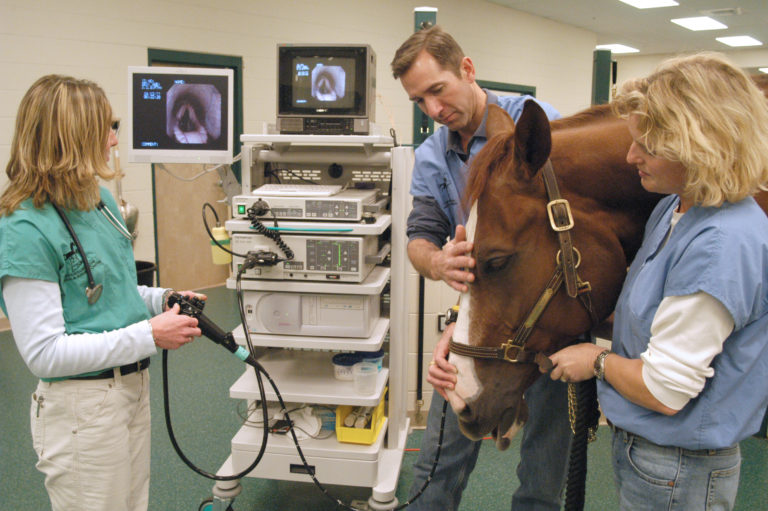Q: My 10-year-old warmblood mare is quite lazy. She does not respond to the whip. She simply ignores it. She never puts her ears back or gets angry. While I love that she hardly ever spooks and is not really excitable, I would like some advice on how I can get her more responsive to the whip. She has excellent breeding, and the vet can’t find anything wrong with her.
—Janet Lorenz of Aurora, Illinois
A: Good communication between a horse and rider is a basic foundation in proper training. The horse’s willingness to move forward is essential. To improve your mare’s response to the whip, I suggest the following procedure. Keep in mind that to develop throughness and good impulsion, the horse needs to respond to the leg aids with the whip as additional support. I have used this procedure successfully many times to develop the desired response between horse and rider.

As an Amazon Associate, Dressage Today may earn an affiliate commission when you buy through links on our site. Products links are selected by Dressage Today editors.
Step 1: You will first need to longe your mare on a 15-meter circle. The goal is to bring her into a very light frame on the bit. Use a longer-than-normal longe whip with a long lash and simple side reins. The whip needs to be able to reach the haunches of the horse, and the side reins should be long enough that the mare can achieve the desired roundness under saddle with her nose not behind the vertical. She should be able to move freely forward with a light connection. Adjust the size of the circle accordingly. After warming up at the walk, send your mare into a nice forward trot. When she slows down, use the whip at or around her haunches to encourage forward movement. Longe in both directions and do transitions between trot and canter. The goal of this exercise is to get your horse active using the whip, which will be helpful once under saddle.
Step 2: The next step is to bring the horse alongside you, in the middle of the arena, still in side reins. Using an extra-long dressage whip, tap your mare just behind the girth, then move the whip toward her haunches to determine where she is most sensitive. The goal is to get the horse to move sideways away from the whip. If the side reins inhibit sideways movement, remove them. To tap your horse, use a quick double-tap rhythm. An assertive double tap is always more effective than one hard crack of the whip. After completing the exercise in both directions, you should be able to determine where your horse is most sensitive to the whip.
Step 3: Now you will need the help of a trainer or trusted, experienced rider. The rider should be in the saddle, with no side reins and the reins in light connection. The helper on the ground should have the longe line attached to the bit. The helper will double tap your horse (as with Step 2) in the most sensitive area, prompting sideways, not forward, movement. One side will be more sensitive than the other. The goal is to get the hind legs to make quick, almost trot-like steps away from the whip. When your horse responds, the helper will tap her when the inside hind leg is in the process of leaving the ground. This is extremely important. My experience is that horses react better with this exercise when they can move sideways rather than forward. Don’t ask for more than five steps at this point.
Step 4: Next, with the helper still holding the horse from the ground, the rider will use a dressage whip, in the exact same spot and with the same double-tap rhythm and intensity, to get the same reaction. But now she will also incorporate the leg aid. If your horse does not react with the same sideways movement, the helper on the ground will immediately double tap with her whip to get the reaction.
Step 5: Next, the rider and helper will move to the rail and remove the longe line. With the helper positioned at a safe distance at the shoulder of your horse, the rider will again double tap your horse while using leg aids in the same rhythm to get forward movement. Remember that the helper should use the same intensity and rhythm with the whip. If your horse does not immediately move forward, the helper will again double tap her from the ground.
Once your horse moves swiftly forward, both rider and helper should stop right away and praise the horse by using the voice, pats on the neck or treats. Repeat the exercise six or seven times with the helper on the ground to ensure your horse understands and receives praise. The goal is to get your mare to react more quickly each time. Be sure that the rider changes reins and repeats the exercise in the other direction and uses the whip on the opposite side of the horse’s body. Don’t be alarmed if your horse takes quick trot steps—this is exactly the reaction you want.
Step 6: Once your horse understands the exercise, ask again for forward trot from the saddle, but this time do not stop. Instead, double tap the horse again and ask for a quicker tempo. Be sure you are using your other driving aids in the same rhythm of the whip. Every time your horse begins to slow, use the whip and aids to again encourage a quicker tempo. Try to ride as many straight lines as possible during this exercise and don’t change direction until you are certain your horse understands. The reason you need to ride straight lines is that you want your horse to focus only on reacting quickly and moving straight forward in response to the aids. Be sure to keep your horse at the desired pace for at least a few minutes in each direction. Repeat the exercise at the canter going in both directions. Be sure to continue to praise your horse when she responds.
Horses respond well and like routine work. It is extremely important to repeat these exercises over and over again until the forward movement becomes confirmed in your horse.

Sabine Rijssenbeek is a native of the Netherlands and holds a Level 3 International Trainer’s Passport (highest level in the Netherlands). She was short-listed for the 1980 Moscow Olympics and has trained Olympic and Dutch National Championship horses. She is located in California.











